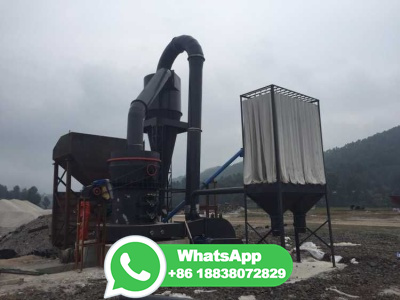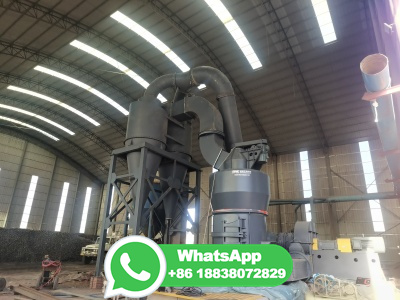
Liquefaction. Coal liquefaction is a process of converting coal into liquid fuels or petrochemicals. There are several processes to accomplish this task. The two most common are the indirect route and the direct route [58, 59].
WhatsApp: +86 18037808511
An overview of coal liquefaction and its future potential is available. Coal liquefaction methods involve carbon dioxide (CO 2) emissions in the conversion process. If coal liquefaction is done without employing either carbon capture and storage (CCS) technologies or biomass blending, the result is lifecycle greenhouse gas footprints that are ...
WhatsApp: +86 18037808511
Coal resources have been used to produce liquid transportation fuels by several process routes, collectively referred to as coal liquefaction or, more generally stated, as Coal to Liquids (CTL). Early records of coal conversion to liquid fuel date to 1913 and an extraction process developed by Friedrich Bergius in Germany [ 7 ].
WhatsApp: +86 18037808511
Through a onestage liquefaction method using a powdered iron catalyst and hydrogen donor solvent, the NEDOL process can attain a high liquefied oil yield from a wide range of coal ranks under a mild reaction condition. Through these technical characteristics, the NEDOL process has the following advantages in commercialization.
WhatsApp: +86 18037808511
Brown coal liquefaction technology is intended realize the liquefaction of brown coal of Victoria, Australia, with the object of utilizing it as an energy resource. Research and Development was started in 1981 with a 50 t/d pilot plant in Victoria province. Fig. shows the process. The initial goals of the project, 50% liquid fuel yield (actual result was 52%) and longterm operation with ...
WhatsApp: +86 18037808511
The development of diagnostic instrumentation for monitoring coal liquefaction process streams is discussed. A sapphire optical fiber was used as an attenuated total reflectance (ATR) element in conjunction with Fourier transform infrared (FTIR) spectrometry to probe harsh liquefaction process streams. ATR provides a short, reproducible ...
WhatsApp: +86 18037808511
Coal liquefaction residue is the solid waste from the liquefaction system and accounts for about 2530% of the feed. 4 Thermal conversion through gasification is a better way to deal with this ... Zhang Y. Novel Use of Residue from Direct Coal Liquefaction Process. Energy Fuels 2009, 23, . /ef. [Google ...
WhatsApp: +86 18037808511
The principal direct liquefaction processes are: 1. Extraction. Some bioderived and waste materials yield an oil product by extraction that can directly be used as feed material for refining.
WhatsApp: +86 18037808511
SUMMARY Coal is a solid with a high carbon content but with a hydrogen content of ~5%. Compared with liquid fuels (derived from crude oil) it is inconvenient to handle and unsuited to some applications, eg transportation.
WhatsApp: +86 18037808511
The liquefaction process (coal was the feedstock of choice for many decades in the twentieth century) is a process used to convert a solid fuel into a substitute for liquid fuels such as diesel and gasoline. Coal liquefaction has historically been used in countries without a secure supply of petroleum, such as Germany (during World War II) and ...
WhatsApp: +86 18037808511
Conversion of raw coal to distillate liquid and gaseous hydrocarbon products by solvent liquefaction in the presence of molecular hydrogen employing recycle of mineral residue is commonly performed at a higher thermal efficiency than conversion of coal to pipeline gas in a gasification process employing partial oxidation and methanation reactions.
WhatsApp: +86 18037808511
the process to dissolve the coal and to transfer externally produced hydrogen to the coal molecules. Catalytic liquefaction resembles solvent extraction, except that hydrogen is added to the coal with the aid of a catalyst. Figure presents the flow diagram of a typical solvent extraction or catalytic liquefaction plant. These coal ...
WhatsApp: +86 18037808511
Coal Authority. Mine water is a plentiful source of heat, warmed by geological processes below ground (Credit: Coal Authority) A quarter of the UK's homes sit above abandoned coal mines, long ...
WhatsApp: +86 18037808511
Coal Resources, Production and Use in Indonesia. Stanford, in The Coal Handbook: Towards Cleaner Production: Coal Utilisation, 2013 Coal liquefaction. Coal to Liquids (CTL) is at feasibility stage in Indonesia for several processes. had expressed interest in developing their FischerTropsch indirect process in Indonesia.
WhatsApp: +86 18037808511
History. In the past, coal was converted to make coal gas, which was piped to customers to burn for illumination, heating, and cooking. High prices of oil and natural gas led to increased interest in "BTU Conversion" technologies such as gasification, methanation and liquefaction. The Synthetic Fuels Corporation was a governmentfunded corporation established in 1980 to create a market ...
WhatsApp: +86 18037808511
Relative to the Base Case, product cost reductions for Cases 13 were roughly estimated as follows: Case % Cost Reduction[7] 1 20 2 22 3 28 B. Wyoming Coal Case To determine the effect of coal type on the EDS liquefaction process, ERE performed a study design for subbituminous Wyodak coal.[12][14][15] This design was patterned after the 1975/ ...
WhatsApp: +86 18037808511
The products obtained through this process were defined as synthetic because the coal feedstock undergoes different stages of heating, cooling, pressure, catalysis, enrichment, gasification and finally liquefaction. The Bergius process allowed the conversion of coals, tars, and other solid or liquid carbonaceous substances into highgrade ...
WhatsApp: +86 18037808511
A process for the liquefaction of coal wherein raw feed coal is dissolved in recycle solvent with a slurry containing recycle coal minerals in the presence of added hydrogen at elevated temperature and pressure. The highest boiling distillable dissolved liquid fraction is obtained from a vacuum distillation zone and is entirely recycled to ...
WhatsApp: +86 18037808511
Even while you are still burning coal, liquefaction and then burning the lightoil derived solid fuel is a good idea. It will generate large amounts of petrol for use in other things, and you get a large fraction of the energy value from the coal. 10 coal becomes 10 heavy oil, 15 light oil, and 20 petrol gas.
WhatsApp: +86 18037808511
Other articles where process is discussed: coal utilization: The FischerTropsch process: .1950s in South Africa (the process) and now supplies as much as onethird of that country's liquid fuels. ... coal liquefaction process. Learn about this topic in these articles: coal processing. In coal utilization: The FischerTropsch ...
WhatsApp: +86 18037808511
Coal liquefaction is the process of making a liquid fuel from coal. The fundamental difference between coal, a solid, and liquid fuels is that the liquid fuels have a higher hydrogen:carbon ratio. Liquid fuels have lower ash contents and are easier to upgrade (, to remove unwanted impurities such as nitrogen and sulfur).
WhatsApp: +86 18037808511![Outline the process of Liquefaction [4] Flashcards | Quizlet](/s0j6hgr/177.jpg)
Liquefaction occurring beneath buildings and other structures can cause major damage during earthquakes. Name drop an example of where/when liquefaction has occurred (3) For example,the 1988 earthquake in north eastern India. Liquefaction caused damaged roads and bridges,causing people to be trapped or injured.
WhatsApp: +86 18037808511
A kinetic analysis of coal liquefaction in flow reactors of the 1 t/d Process Supporting Unit (PSU) for the NEDOL Process is reported. The coal liquefaction section of the PSU consists of a preheater and three liquefaction reactors in series. Progress of coal liquefaction in PSU has been investigated, focussing mainly on the changes in coal derived insoluble components through the preheater ...
WhatsApp: +86 18037808511
One of several direct liquefaction processes currently under advanced stages of development is the SolventRefined CoalI (SRCI) process. A major SRC1 product option is a low sulfur, low ash solid (SRC) which could be used as an electric utility boiler fuel much in the same manner that pulverized coal is currently fired in this type of combustion equipment.
WhatsApp: +86 18037808511
A twostage direct. Indirect Coal Liquefaction. 22. • The process begins with the gasification of coal • reacting coal with steam and oxygen at elevated temperatures (1,000 to 1,500 degrees Celsius) and moderate pressure (~500 pounds per square inch [psi]) • The naphtha product is basically a very low octane (, about 40 octane ...
WhatsApp: +86 18037808511
Indirect liquefaction requires an intermediate gasification of the solid coal to form a synthesis gas, which is then converted to the liquid product. This process results in the complete dismantling of the coal structure. direct liquefaction, coal is exposed directly to hydrogen at high temperatures (450C) and high pressures (kPa ...
WhatsApp: +86 18037808511
Coal liquefaction is the conversion of coal to a cleanburning, lowsulfercontent fuel which can augment gasoline and boiler fuels. Direct liquefaction processes are currently in the research and development stage and are expected to yield a high percentage of boiler fuels for industry and utilities. Indirect liquefaction processes are ...
WhatsApp: +86 18037808511
Investigation of the nonintegrated twostage coal liquefaction (NTSL) process was initiated at the Wilsonville Advanced Coal Liquefaction R and D Facility during May 1981 when the HOil hydrotreating unit came successfully online. The primary objective of this investigation is the development of a commercially feasible method of efficient ...
WhatsApp: +86 18037808511
Because of the limited time available, a decision was made to focus considerations upon the condensate waters from direct coalliquefaction, lowtemperature coalgasification, and oilshale retorting processes.
WhatsApp: +86 18037808511
The effective utilization of the coal liquefaction residue (CLR), which contains about 80% organic matter, is of great significancefor improving the oil yield of the direct liquefaction process ...
WhatsApp: +86 18037808511
Fig. 12 shows the total costs of the whole coal liquefaction process together with the costs of four major parts: coal price, (coal) transportation, DCL production and distribution. Among three, "DCL_R" is the most economical one, the price of which is only two third of "DCL_H". For "DCL_H" and "DCL_R", the price caused by the ...
WhatsApp: +86 18037808511
The DCL process produces considerably highvariety and efficient products at low temperatures compared to the indirect coal liquefaction process. Generally, Fig. 1 shows the distinct difference between the direct and indirect liquefaction processes. Importantly, DCL consists of many steps for the conversion of coal to PA (preasphaltenes) and ...
WhatsApp: +86 18037808511
Coal liquefaction is a process used to turn coal, a solid fuel, into a substitute for liquid fuels such as diesel and gasoline. This process has historically been used in countries without a secure supply of crude oil, such as Germany and South technology used in the process is quite old, and was first implemented during the 19th century to provide gas for indoor lighting.
WhatsApp: +86 18037808511
The aim of this study is to investigate the transformation of hydrogendonor solvent tetralin in the direct liquefaction process of coal. Pure tetralin liquid as well as mixture of tetralin and Wucaiwan coal (WCW) were separately reacted under a liquefaction condition, and constituents of liquid product were analyzed by GCMS. The results show that after the tetralin liquid reacts with high ...
WhatsApp: +86 18037808511